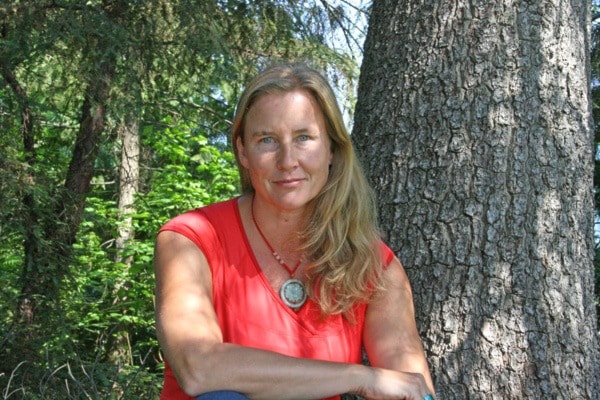The health care system in BC can be daunting at the best of times, for Aboriginal people the experience can be even more frustrating. Fortunately, in the West Kootenay there is an Aboriginal Patient Navigator (APN), whose job it is to help Aboriginal clients by providing support during hospital stays and clinic visits.
"I ensure that First Nations people who are in the area and come to the hospital here are able to access culturally relevant, competent, and safe health care," said Anni Muhlegg, aboriginal patient navigator, Kootenay Boundary. "I help address cultural issues, needs, things like that."
Muhlegg provides assistance for her clients and their families by communicating with physicians and nurses about patient/client care, advocacy, and provision of and linkage to services.
"For example, if someone comes to the ER and if they feel that they've been discriminated against, they have a questionnaire they have to fill out. Sometimes folks feel that the practices aren't safe for them in terms of their culture. I also deal with complaints. I'll meet with the person and find out about the history and what happened."
Muhlegg is available at the Castlegar Health Centre on Mondays, Wednesday mornings, and Fridays. She is also works as a mental health and substance use counsellor at Salmo Community Resources Society.
"My role is very wide," she said. "I do everything from supportive counselling to application processes for benefits for First Nations people who need coverage."
Muhlegg has been in the position for just over seven months and really enjoys the diversity of her job.
"It's exciting," she said. "It's challenging at times because it's a very Euro-centric medical system, but at the same time there are efforts within Interior Health (IH) to help address that and a lot of good work is being done."
She also travels a lot in her job as she meets clients at various hospitals and health care facilities throughout the boundary area.
"I get a lot of referrals by phone," she said. "At the Castlegar Health Centre, I get referrals from the ER. I usually do lots of follow-ups. I also will meet people in the office if they're comfortable."
Historically, First Nations people have been marginalized through the colonization process and the unfortunate legacy of residential schools for example, says Muhlegg. "This has impacted their overall health as they are survivors of multi-generational trauma."
"Folks are often not comfortable coming to the institutions themselves. So I make sure to give them the choice," she said. "Part of my practice is, hopefully, to be working from an anti-oppressive perspective so they feel as safe as possible. My role very much includes that, to address issues of safety and to make space so that the system itself can be transformed into more of a safe space."
That transformation could include bringing in elders for specific ceremonies that a First Nations person might have requested.
"If someone is in the hospital and they're in acute care, they may want to have a family gathering and have some smudging done," she said. "So there's cultural practices like this - examples that are not part of the mainstream system and have not historically been included. So part of my role is to educate myself and to be as inclusive as possible, so patients can feel that they've been treated fairly."
Anyone who self-identifies as Aboriginal can use the Aboriginal Patient Navigator's services.
"Having an APN increases access and helps bridge gaps," said Muhlegg. "The APN serves in a wide role and this includes helping educate about stigma, discrimination and marginalization First Nations individuals and communities still face today."
